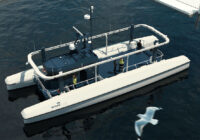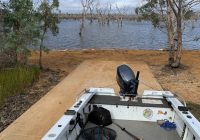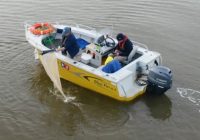Last year, scientists from the Australian National Fish Collection (ANFC) caught a species of shark new to science. That specimen became the holotype of a newly named species, the reference specimen for the new scientific name. But finding a new species of shark wasn’t a surprise. Genetics had already revealed its existence.
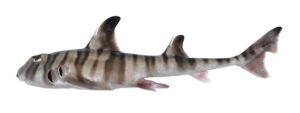
The holotype of the newly described shark species Heterodontus marshallae, the Painted Hornshark.
Unique Order of Sharks
The new species belongs to a unique Order of sharks, known as the Heterodontiformes. As the name suggests to those in the know, these sharks have unique teeth. They have rows of shark-like teeth at the front, but rows of human-like molars at the back, which is unique among sharks.
Fish biologist at ANFC, Helen O’Neill, said this group of sharks has many interesting features.
“This order of sharks resembles fossils of long extinct sharks due to similar morphology, including spines. But we know now they’re not closely related,” Helen said.
“Heterodontiformes have a unique body shape and ‘horns’ formed by crests just above their eyes.
“They tend to sit on the sea floor and feed mainly on creatures like molluscs and crustaceans. They have a small mouth but crushing jaws that are huge relative to their skull size and powerful enough to crush cowrie shells.”
The order Heterodontiformes contains a single family, which contains a single genus and nine different species. The most well-known is the Port Jackson shark, Heterodontus portusjacksoni. But recent genetic studies of specimens held in biological collections had shown that one of the species in the group, Heterodontus zebra, was actually two species. This brings the tally to 10.
New Heterodontid Found
By the time the ANFC team boarded our research vessel (RV) Investigator in November 2022, they already had enough information to write a paper describing and naming the new shark, Heterodontus marshallae, or the Painted Hornshark.
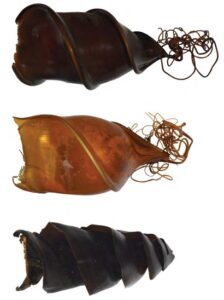
Egg cases of Heterodontus marshallae, H. zebra and H. portusjacksoni (top to bottom).
The species name honours Dr Lindsay Marshall, who painted all the rays for the guide book: Rays of the World.
The team was on board RV Investigator to help survey seabed habitats and biodiversity in Gascoyne Marine Park, south of Ningaloo Reef in Western Australia. Finding a specimen of the species about to be named H. marshallae was just a bonus. Even better, it was suitable to become the holotype, the specimen that is the reference for the species’ scientific name.
“There are about six specimens of H. marshallae in museums and collections around Australia, as well as one egg case,” Helen said.
“We have a female specimen in our collection, but the one we collected during the voyage is a male. We prefer to use males for shark holotypes because they have claspers, which are external reproductive organs that can vary between species and help us tell them apart.”
The newly named species, H. marshallae, lives only off northwestern Australia in waters around 125 to 229 metres deep. In contrast, H. zebra is found in shallower waters, from the surface to 143 metres, and lives in Indonesia and northwards to Japan.
Dr Will White, research scientist at ANFC, said H. marshallae was confused with H. zebra for a long time because of their similar colour.
“Both species are pale with 22 dark brown bands and saddles. But they have small differences in the markings on their snouts and below their gill slits. Their egg cases are also different,” Will said.
“Despite their closely similar looks, genetically, H. marshallae is more closely related to the Port Jackson shark, H. portusjacksoni.
“This Order of sharks is now very well known. The last time a new species was described in this Order was in 2005. I’d be surprised if there were any more.”
The paper, Species in Disguise: A New Species of Hornshark from Northern Australia (Heterodontiformes: Heterodontidae), was published in the journal Diversity by authors from CSIRO, Elasmobranch Research in Belgium, and Florida Museum of Natural History.
For more information visit www.csiro.au
To keep up to date with all marine industry news visit www.marinebusinessnews.com.au





